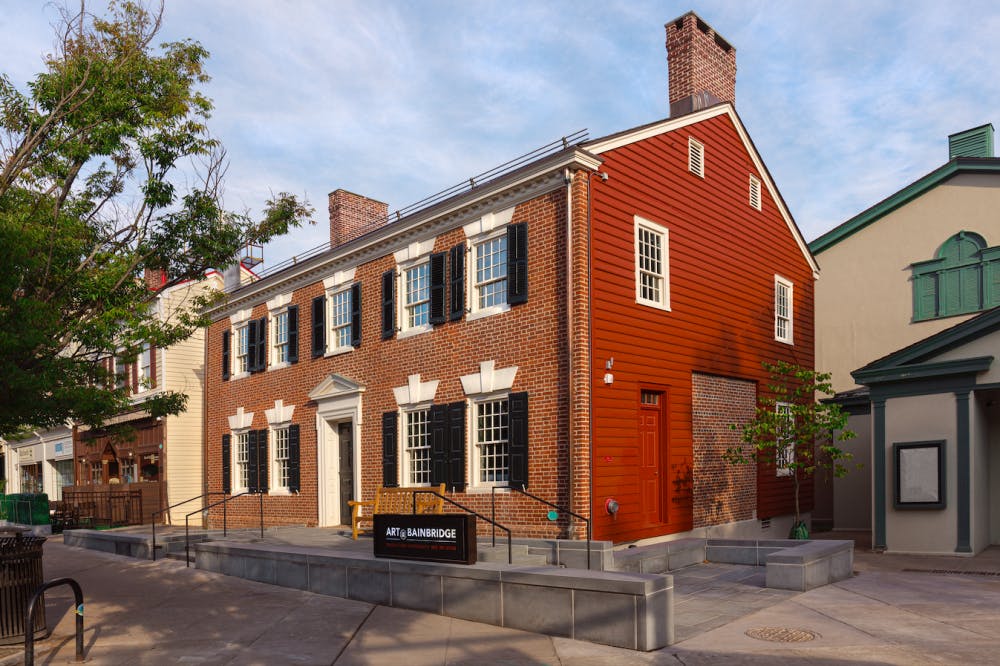On Saturday, Sept. 14, the University formally reopened Bainbridge House, one of the oldest surviving buildings on Nassau Street, dating back to 1766, as an art gallery.
Over the past several months, a partnership between the University and the University Art Museum have supported the building’s preservation and restoration, preparing it to house art galleries and provide spaces for educational and community programs.
Now called Art@Bainbridge, the gallery will feature installations this year about the concept of shelter in relation to domesticity, belonging, and identity. Currently, Bainbridge features an exhibit by Jordan Nassar, a Palestinian-American artist.
“His work is super cool because he uses the traditional style of weaving but incorporates a contemporary color palette and landscapes,” said Sakura Price ’22, a student who works at the gallery’s welcome desk.
The community held a block party in honor of the reopening on Saturday from 11 a.m. to 4 p.m.
According to the University Art Museum, the building, which dates back to 1766, retains nearly all of its original structure. Job Stockton, the cousin of Richard Stockton, a signer of the Declaration of Independence, designed it in the Georgian style, an English architectural style found widely in the American colonies and known for its symmetry.
The house, which sits at 158 Nassau St. near the intersection with Washington Rd., was originally a private residence for Mr. Stockton, but it played an important role in history when it lodged members of the Continental Congress in 1783. At the time, Princeton was the provisional capital of the United States and the Congress met at Nassau Hall.
After Mr. Stockton’s death, the house was leased to Absalom Bainbridge, whose son William, the building’s namesake, became a hero in the War of 1812.
Acquired by the University in 1877, the building served stints as a dormitory and a library, being leased to the Princeton Public Library in 1910, according to a community newspaper. It was later occupied by the Historical Society of Princeton.
According to a press release from the University Art Museum, the house “has been transformed into a compelling public venue.”
The gallery “will feature the work of contemporary artists in an intimate domestic setting.” Price noted that most of the visitors thus far have been local Princetonians.
At the ribbon-cutting event last Saturday, President Christopher L. Eisgruber ’83 spoke on the occasion of the house’s reopening.

“Bainbridge House now takes on a new life,” he said, “bringing the transformative power of art to the community.”








